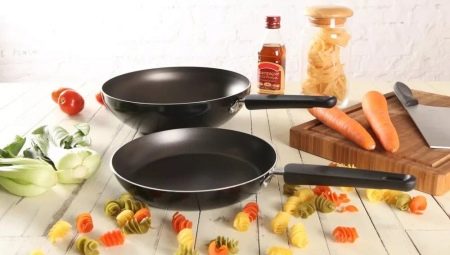When buying this or that thing, everyone pays attention to all the components of the purchased model: so that it fits in size, materials, is easy to use and, most importantly, is practical. The same applies to pans, and more precisely, to the handles for it, because you need to pay attention not only to what material this or that type is made of, but also which was used to make the handle.
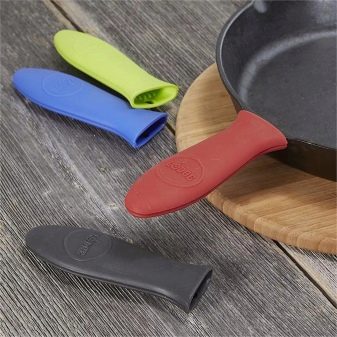

Many of the following factors will also depend on the handle, because thanks to it we get, move or immerse the pan. The handle should fit your concepts of convenience, maneuverability and versatility.
And before you buy your favorite model, pay attention to the handle, because it has a lot of useful qualities.

Kinds
Any pen, like a pan, has its own specific shape and size. Many manufacturers produce not only solid models of pans with handles, but also options with removable holders. This is, first of all, convenient for consumers, since it significantly saves the already small space of the kitchen.
Recently, developers are increasingly paying attention to such an important factor as convenience - the handle should fit optimally in the hand and not cause discomfort during use. All this is done with the expectation of eliminating the possible risks of burns or tipping over the pan, if it is heavy.

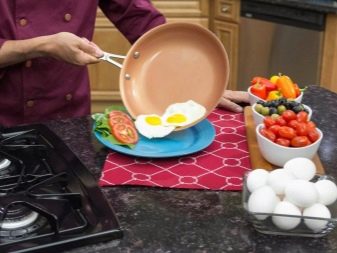
Cast handle
Many people remember Soviet cast-iron pans at their grandmother's house. They just have a molded handle, which usually has a round oblong shape and is located on one side.
Heavier models have handles on both sides. They are standard semicircular and horizontal.
Now cast handle is used in many models of the budget and middle classes. For a change the handle is made of heat-resistant plastic or silicone.
For beautiful design use a variety of patterns and drawings.
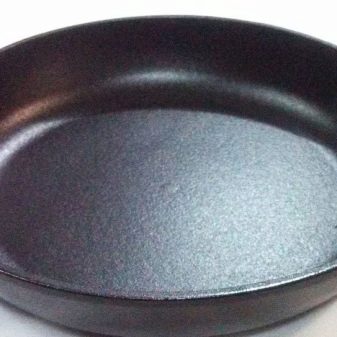
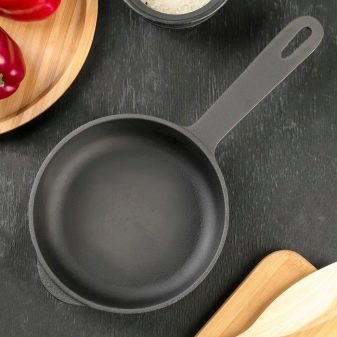
The peculiarity of the models of recent years is that, In addition to heat resistance, a new property was added to the holders - if you take the pen with wet or damp hands, it will not slide on the surface.
It is worth noting the feature of cast-iron pans. They were envisaged initially as pans without holders or with cast handles, since such a model is quite weighty in itself. If it happens that the holder is not fixed correctly or not to the end, then there is the possibility that the pan may fall out of your hands, and since the weight is quite large (the minimum weight starts from 2.5 kg), then the impact will be very strong.
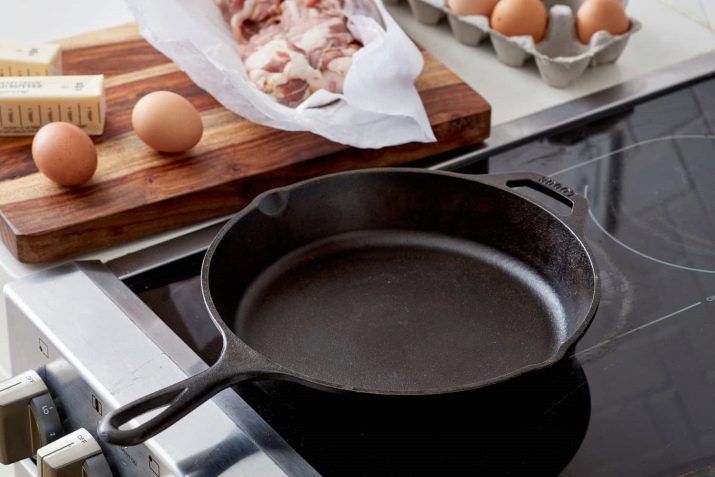
Universal removable model
When choosing pans, models with removable handles are increasingly being purchased. This saves space both in the kitchen and in the oven, and loading dishes into the dishwasher is much easier. In a word, kitchen utensils are becoming more compact.
The mechanism itself, through which the holder is attached, can be varied.
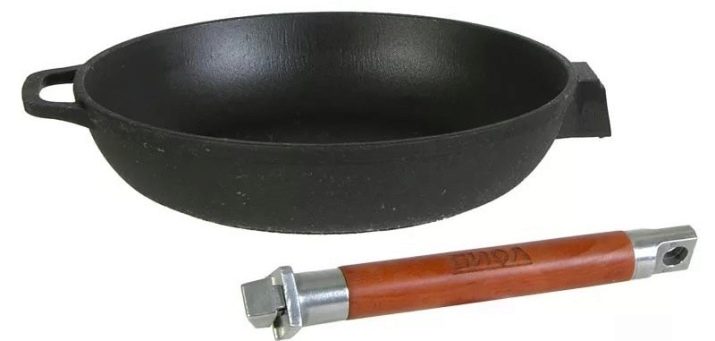
The most popular model of the mechanism (which can be found on each 6 out of 10 pans) is considered to be push-button. It's simple: in order to unfasten the handle, you just need to press the button or pull it towards you, then raise the handle 45 degrees up and unfasten.
The popularity of this mechanism lies in the fact that the whole process can be carried out with one hand. And this is very convenient if, for example, in the process of preparing a dish, you have one and is free.

A more complex mechanism is the option when the button needs to be drowned. Usually the move of such a button is very difficult, and you will have to work hard to make it work as it should.
There is also this type of handle fastening, when the button needs to be pressed and displaced from itself, then gently pull and unfasten the handle. This type of mount is easy to use and understandable to everyone. In order to attach the handle back, everything should be done in the reverse order, it is only necessary to wait for the click, which will notify you that the handle and pan are fastened. The pan can move to the side, so you have to hold it with your free hand, which can cause certain inconvenience if, for example, it is in the oven.

Folding holder
This type of handle does not quite apply to removable ones, although it was most likely thought of as such. What unites them is the fact that they are aimed at saving space.
The folding handle has a small “knee” in the middle, which folds at a certain angle. I.e if you need to remove the pan, then it is worth bending this “knee”, and the handle will fold in half.
The disadvantage that many users note is that the low-quality models in this same “knee” have plastic elements that cannot tolerate high temperatures. Therefore, the use of this model in the oven or in the oven is not recommended.
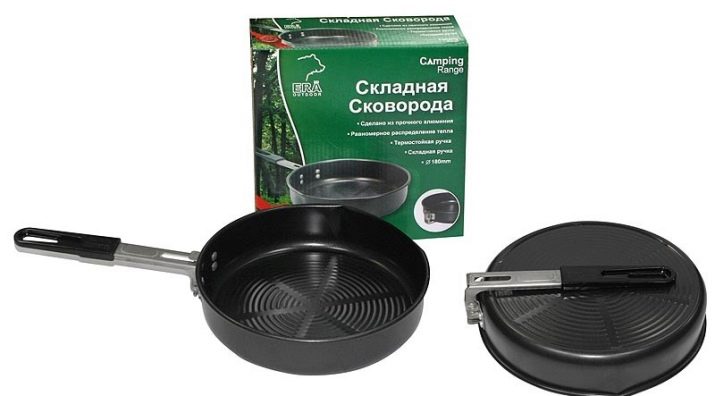
Twisting Model
There are models in which the handle is detached from the pan by untwisting the clamping mechanism that is integrated into it. This method of attachment allows you to get the best fit and fixation.
The downside is the time it takes to attach the handle to the pan. The screwing process can be performed only when you hold the frying pan with one hand and screw the mechanism with the other. It turns out that the pan at this moment should be, if not cold, then not too hot.
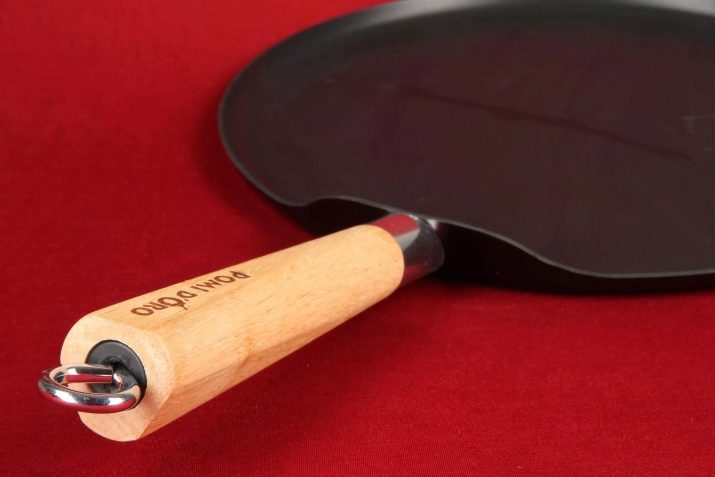
Production material
Pens are now made from affordable and well-known materials that are inexpensive, but at the same time allow the dishes to serve much longer.
- Bakelite - material that is most often used for the manufacture of pens, pans and lids. This is a material that is made of heat-resistant plastic. These handles are lightweight, comfortable to hold, and they do not slip out of your hands. This plastic can withstand temperatures from 260 degrees Celsius, although the temperature limit can be set by the manufacturer himself at his discretion, for example, up to 140–170 degrees, so before buying something with such handles, you should familiarize yourself with the characteristics of the model.
Deformation from exposure to strong temperatures appears immediately - the plastic either melts or swells first, and then settles and solidifies in a form that is inconvenient for further use.
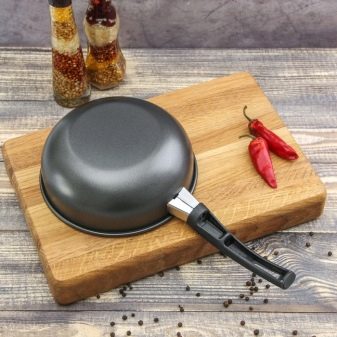
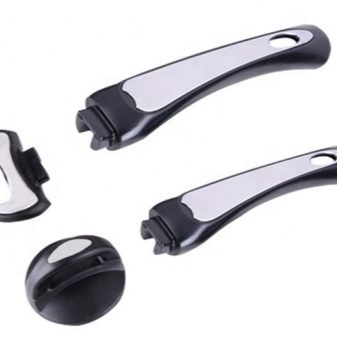
- Metal. A convenient but not very good option for pans, as the metal heats up very quickly. Without a potholder or a towel, removing the pan from the fire becomes completely impossible, because you can get a burn.
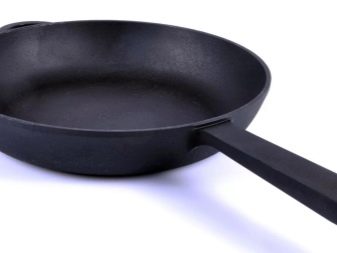
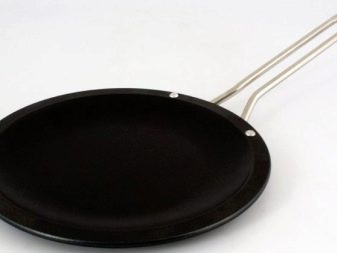
- Heat resistant silicone. Usually it is used for inserts on metal handles, but there are also handles that are completely framed by it. Silicone does not heat up, nice tactile. The maximum heat that such a material can withstand reaches 220 degrees Celsius. But there are models in which the heat resistance is much lower.
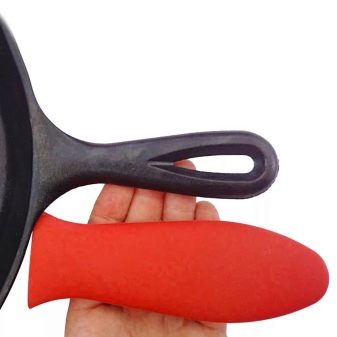
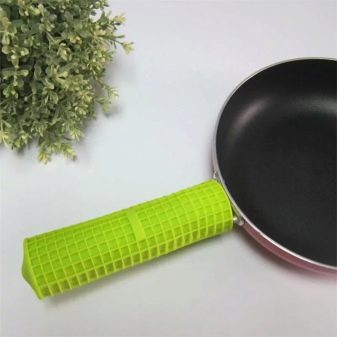
- Stainless steel. They occupy a separate niche among the materials for pens. Often, steel handles are made whole with a pan, quite long and protruding. They are made hollow to ensure minimal heating of the handle surface.

An overview of the pan with a removable handle awaits you further.
